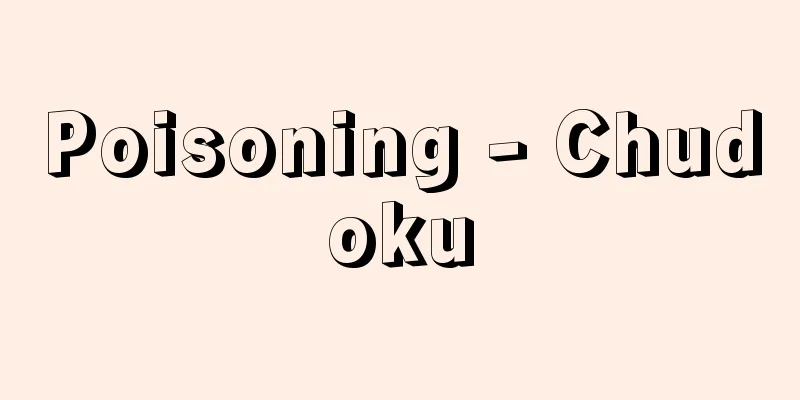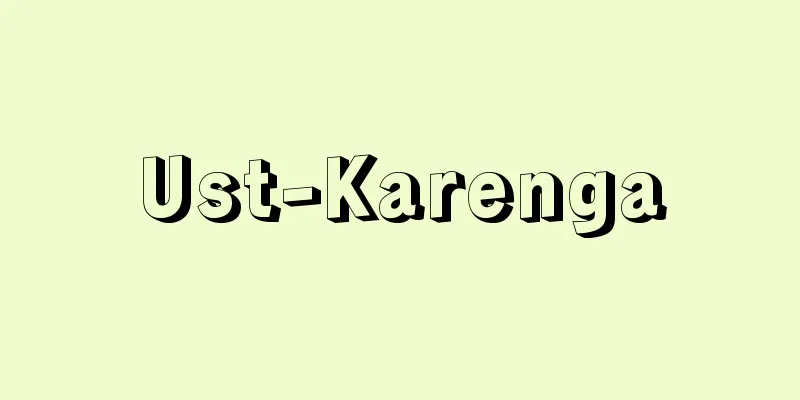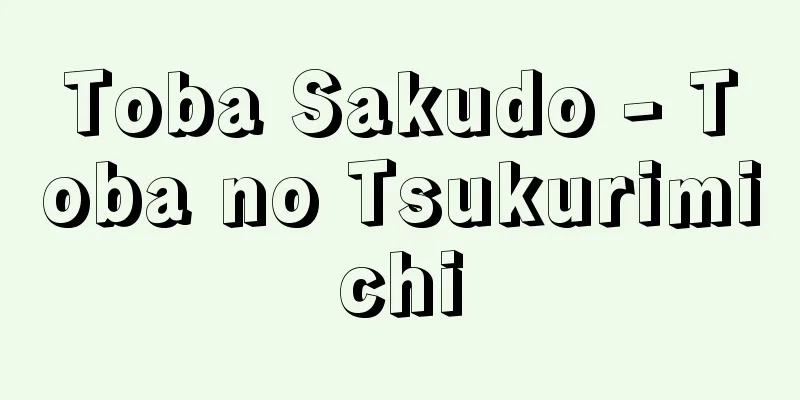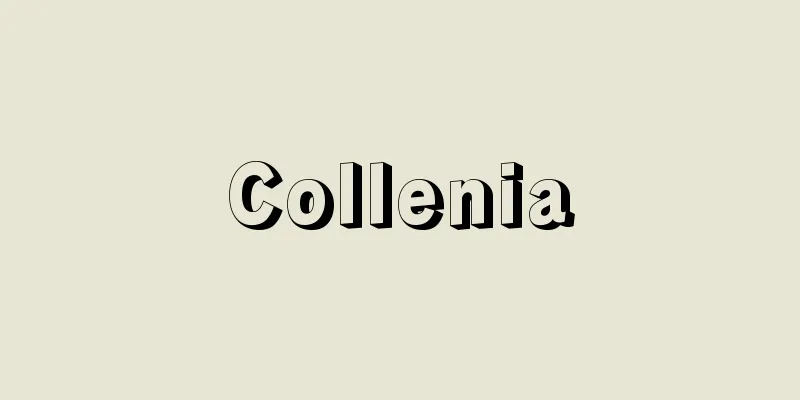Poisoning - Chudoku

|
It is a condition in which a certain type of chemical enters the body, impairing the normal functioning of organs and tissues and resulting in various symptoms. Poisoning is broadly classified as chronic poisoning or acute poisoning, based on the duration of contact of the poison with the body and the course of onset. Harmful substances that cause poisoning include pharmaceuticals, pesticides, industrial chemicals, household chemicals, as well as animal and plant poisons and bacterial poisons. [Ukai Taku] Chronic poisoningSome chronic poisonings can become addictive because using drugs gives a temporary feeling of exhilaration (for example, narcotics, stimulants, paint thinner, and alcohol). As for chronic occupational poisoning, well-known poisonings include organic solvent poisoning and lead poisoning, as well as poisoning with mercury, arsenic, manganese, and chromium. In addition, there are also some substances that cause tumor-like lesions through long-term contact with low concentrations of substances, such as bladder cancer caused by aniline dyes and liver hemangioma caused by vinyl chloride monomers. Well-known poisonings caused by environmental pollution are Minamata disease and Itai-itai disease. Minamata disease is believed to have been caused by methylmercury in factory wastewater accumulating in fish and shellfish in the Ariake Sea, and then affecting people who ate a lot of that fish and shellfish. Itai-itai disease is believed to have been caused by cadmium that ran off from mines accumulating in the soil in the Jinzu River basin, causing damage to bones and other parts of the body in people who ate agricultural products containing large amounts of cadmium over a long period of time. Most chronic poisonings have been artificially created, so to speak, with the development of modern industry. Measures have been gradually implemented to combat toxic diseases whose causal relationship with poor environments has been identified. However, future research may determine that what are currently considered incurable and rare diseases of unknown cause are actually poisonings, and it is also possible that new toxic diseases may be created by new chemical substances. [Ukai Taku] Acute poisoningThe incidence of acute poisoning has changed over the years. In the late 1940s, methanol (methyl alcohol) poisoning was common, but in the 1950s, the number of cases of sleeping pill poisoning as a suicide attempt increased. However, from the late 1960s, carbon monoxide poisoning from city gas (suicide attempts in urban areas) increased. Eventually, as city gas was replaced by natural gas, carbon monoxide poisoning decreased. However, since 2002, there have been a series of mass suicides via the Internet, using carbon monoxide poisoning with charcoal briquettes. In addition, the sarin gas attacks that occurred in Matsumoto City, Nagano Prefecture in 1994 and in Tokyo in 1995 brought chemical weapons such as sarin, tabun, soman, and VX to the world's attention. These chemical weapons are also called the "poor man's nuclear weapons" and may be used as a means of terrorism. Thanks to advances in poisoning treatment and restrictions on the sale of medicines and other products, the mortality rate from acute poisoning due to sleeping pills and psychotropic drugs has become extremely low, but the mortality rate from acute poisoning due to pesticides is still high. [Ukai Taku] First aidEmergency treatment for poisoning follows the following basic principles: (1) removal of the toxin and promotion of excretion, (2) symptomatic life-sustaining treatment such as respiratory and circulatory management, and (3) administration of antagonists and antidotes to the poison. Specific emergency measures include the following: (1) If poisonous gas has been inhaled, have the person inhale clean air or oxygen as quickly as possible. (2) If liquid poison has been exposed to the person, quickly remove the clothing and wash the skin thoroughly with water or warm water. (3) When rescuing a person with city gas or propane gas poisoning, do not carelessly turn on the lights (as this poses the risk of an explosion), open all windows and doors to ventilate the room, quickly turn off the source of the gas, and rescue the person. (4) In the case of oral poisoning, if the person is conscious, induce vomiting or perform gastric lavage. In the hospital, administer adsorbents and laxatives to remove the poison from the digestive tract as quickly as possible. There are only a few effective antidotes and antagonists for the tens of thousands of poisoning substances: pralidoxime methyl iodide (PAM) and atropine for organophosphates, various chelating agents for heavy metals, nitrous acid and thiosulfate for hydrocyanic acid, ethyl alcohol for methyl alcohol, and acetylcysteine for acetaminophen. Methods for removing toxins that have been absorbed into the blood include forced diuresis and various blood purification methods (hemodialysis, hemoperfusion, plasmafiltration, exchange transfusion, etc.). However, the effectiveness of these methods for removing toxins varies depending on the molecular weight and metabolism of the toxins, how they are distributed in the body, and the degree of binding to proteins and fats. It is largely thanks to advances in whole-body management methods, focusing mainly on respiration and circulation, that it has become possible to save the lives of patients with severe acute poisoning. In addition, in a situation where a large number of chemical substances, said to number in the tens or hundreds of thousands, surround our lives, it is extremely important to collect and communicate information about harmful substances. The Japan Poison Information Center, a foundation established in 1986, collects and provides information necessary for poisoning treatment, and accepts poisoning-related telephone consultations 365 days a year. [Ukai Taku] "Japan Poison Information Center, ed. Poisoning Response Manual -- Useful in an Emergency!" (1995, Lyonsha)" ▽ "Japan Poison Information Center, ed. Acute Poisoning Treatment Guide -- Essential Information on 272 Chemical Products and Natural Toxins," 3rd Edition (1999, Yakugyo Jihosha)" ▽ "Japan Poison Information Center, ed. Poisoning Accidents and Countermeasures Learned from Case Studies," Revised Edition (2000, Jiho)" [References] | | | | | | | |Source: Shogakukan Encyclopedia Nipponica About Encyclopedia Nipponica Information | Legend |
|
ある種の化学物質が生体内に入り、臓器や組織の正常な活動に障害を生じて種々の症状をもたらすことをいう。中毒は、毒物の生体との接触期間や発症経過から、慢性中毒と急性中毒に大別される。中毒をおこす有害物質としては、医薬品、農薬、工業用薬品、家庭用薬品のほか、動植物毒、細菌毒などがある。 [鵜飼 卓] 慢性中毒慢性中毒のなかには、薬物を使用することによって一時的に気分爽快(そうかい)となるために、嗜癖(しへき)性をもつに至るものがある(たとえば麻薬、覚醒(かくせい)剤、シンナー、アルコールなど)。また、慢性職業性中毒では、有機溶剤中毒と鉛中毒のほか、水銀、ヒ素、マンガン、クロムなどの中毒がよく知られている。このほか、アニリン系色素による膀胱癌(ぼうこうがん)や塩ビモノマーによる肝血管腫(しゅ)など、低濃度長期間の接触によって腫瘍(しゅよう)性病変を生じるものもある。環境汚染によって生じた中毒として有名なのが、水俣(みなまた)病とイタイイタイ病である。工場排水中のメチル水銀が有明(ありあけ)海の魚貝類に蓄積し、その魚貝類を多く食べた人に発症したとみなされているのが水俣病で、イタイイタイ病は鉱山から流出したカドミウムが神通(じんづう)川流域の土壌に蓄積し、カドミウムを多量に含む農産物を長期間喫食した人の骨などに障害を生じたとされた。 慢性中毒のほとんどは、近代工業の発展に伴って、いわば人為的につくりだされてきたものである。劣悪な環境との因果関係が明らかになった中毒性疾患に関しては、漸次対策が施されてきた。しかし、現在では原因不明の難病・奇病とされているものが、今後の研究によって中毒と断定されることもありうるであろうし、新しい化学物質によって新しい中毒性疾患が生み出される可能性もある。 [鵜飼 卓] 急性中毒急性中毒の発生状況は時代の変遷とともに変化している。昭和20年代後半にはメタノール(メチルアルコール)中毒が多発したが、昭和30年代になると自殺企図としての睡眠薬中毒が多くなった。ところが、昭和40年代後半からは、都市ガスによる一酸化炭素中毒(都市部における自殺企図)が増加する。やがて都市ガスの天然ガスへの切り替えとともに、一酸化炭素中毒は減少した。ところが、2002年(平成14)からインターネットを介した集団自殺が相次いでおきており、その手段は練炭等を用いた一酸化炭素中毒である。また、1994年に長野県松本市で、95年に東京で発生したサリン事件によって、サリンやタブン、ソマン、VXなどの化学兵器が一躍世界の注目を浴びることとなったが、これらの化学兵器は「貧者の核兵器」ともよばれ、テロリズムの手段として使用される可能性がある。 中毒に対する治療法の進歩と医薬品などの販売規制により、睡眠薬や向精神薬による急性中毒の死亡率はきわめて低くなったが、農薬による急性中毒はまだ死亡率も高い。 [鵜飼 卓] 救急処置中毒の救急処置は、(1)毒物の除去と排泄(はいせつ)の促進、(2)呼吸や循環管理など対症的な生命維持療法、(3)毒物に対する拮抗(きっこう)薬や解毒薬の投与、という基本原則に従って行われる。 具体的な救急処置としては、次のような方法があげられる。(1)有毒ガスを吸入した場合は、できるだけ早く清浄な空気あるいは酸素を吸入させる。(2)液状の毒物を浴びたときには、すばやく衣服を脱がせて水や温水で皮膚をよく洗う。(3)都市ガスやプロパンガス中毒者を救出するときは、不用意に電灯のスイッチを入れず(誘爆の危険を伴うため)、すべての窓や扉を開放して換気を図り、すばやくガスの発生源を止めて救出する。(4)経口中毒のときには、意識がはっきりしていたら、嘔吐(おうと)させたり、胃洗浄を行う。病院では吸着薬や下剤を投与して毒物を消化管からできるだけ早く除去する。 中毒に対する解毒薬・拮抗薬として効果的なものは、数万種にもおよぶ中毒原因物質に対してわずか数種類だけである。すなわち、有機リンに対するプラリドキシムヨウ化メチル(PAM)とアトロピン、重金属に対する各種キレート剤、青酸に対する亜硝酸・チオ硫酸、メチルアルコールに対するエチルアルコール、アセトアミノフェンに対するアセチルシステインなどである。 血中に吸収されてしまった毒物を血液中から取り除く方法として、強制利尿法と各種の血液浄化法(血液透析、血液吸着、血漿濾過(けっしょうろか)、交換輸血など)がある。しかし、毒物の分子量や代謝、体内での分布の仕方、たんぱく質や脂肪との結合度などによって、これらの毒物除去方法の効果もさまざまである。 重症の急性中毒患者の救命ができるようになったのは、呼吸・循環を主とする全身管理法の進歩によるところが大きい。また、数万から数十万種ともいわれる多数の化学物質がわれわれの生活を取り巻いている状況では、有害物質に関する情報の集約と伝達が非常に重要である。1986年設立された財団法人日本中毒情報センターでは中毒治療に必要な情報収集と提供を行っており、年中無休で中毒に関する相談電話を受け付けている。 [鵜飼 卓] 『日本中毒情報センター編『中毒対処マニュアル――イザというとき役に立つ!』(1995・リヨン社)』▽『日本中毒情報センター編『急性中毒処置の手引――必須272種の化学製品と自然毒情報』第3版(1999・薬業時報社)』▽『日本中毒情報センター編『症例で学ぶ中毒事故とその対策』改訂版(2000・じほう)』 [参照項目] | | | | | | | |出典 小学館 日本大百科全書(ニッポニカ)日本大百科全書(ニッポニカ)について 情報 | 凡例 |
<<: Toxic eruption; toxicoderma
Recommend
Maceral
…The classification of coal's structural comp...
Presumptive defense - Kaiteikouben
...It differs from a denial in that the person as...
Ubaid period
This cultural period follows the Halaf period in M...
Mizukaido [city] - Mizukaido
An old city in the southwest of Ibaraki Prefecture...
Cyprus problem
Cyprus was originally a Turkish territory, but at...
Nagoya Sanzaburou - Nagoya Sanzaburou
Along with Okuni of Izumo, he is likened to the f...
Chemical engineering
This refers to engineering related to planning ch...
African sleeping sickness
⇒ Sleeping sickness Source: About Shogakukan Digit...
Ammonia oxidizing bacteria - Ammonia sankakin
⇒Nitrite bacteria Source: About Shogakukan Digital...
Color index - Iroshisuu (English notation) color index
The difference between the magnitude of a star mea...
Chukchi-Kamchatkan language family - Chukchi-Kamchatkan
It is found in the northeastern corner of Asia, ad...
Passing through the womb - Passing through the womb
A name given to places where one passes through na...
Foot washing - Asiarai
1. Washing the feet. Also, a basin for washing the...
Galileo Telescope - Galileo Telescope
A telescope that uses a convex lens for the object...
For school use - Gakuyouji
…Currently, Coordinated Universal Time is the bas...




![Saku [city] - Saku](/upload/images/67cba8ce3ea21.webp)




